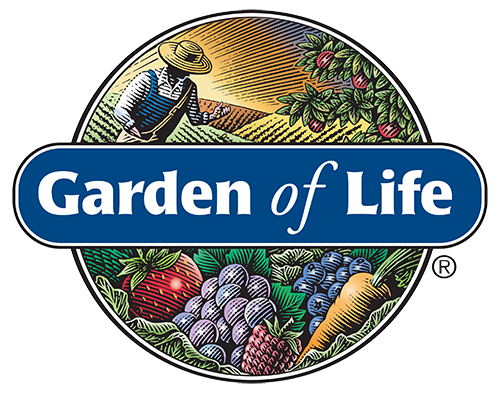Keto 2.0: What Is It and Should You Try It?


Related products

What is the Traditional Ketogenic Diet?
The ketogenic diet, commonly known as 'keto', is a high-fat, low-carbohydrate diet that has been used medically for nearly a century, primarily to treat epilepsy in children. The primary objective of the diet is to induce ketosis, a metabolic state in which the body, deprived of carbohydrates, begins to burn fat as its primary source of energy, producing ketone bodies in the process. This shift from carbohydrates to fat alters the body's metabolic pathway, leading to various physiological benefits, included in the Top 10 Health Benefits of the Ketogenic Diet.
Dr. Helen Cartwright, a London-based nutritionist, explains, "The traditional ketogenic diet typically comprises about 70% to 80% fats, 10% to 20% protein, and 5% to 10% carbohydrates." This stringent macronutrient breakdown forces the body into ketosis, which has not only proven beneficial for managing epilepsy but has also been used for weight loss and, as emerging studies suggest, for managing conditions such as diabetes and Alzheimer's disease.
What is Keto 2.0?
Keto 2.0 represents a modified version of the traditional ketogenic diet, developed in response to some of the sustainability and health concerns associated with the original format. This updated version adjusts the macronutrient ratios to include more proteins and carbohydrates, and less fat, aiming for a balance that still promotes ketosis but with greater nutritional flexibility and heart health benefits.
"Keto 2.0 is essentially an attempt to make the ketogenic diet more palatable and sustainable over the long term, with a stronger emphasis on plant-based sources of proteins and fats," states Dr. Marcus Fielding, a cardiologist with a special interest in dietary impacts on heart health. The goal of Keto 2.0 is not only to maintain the weight loss and metabolic benefits of the original keto diet but also to reduce the potential risks associated with high intake of animal fats and proteins.
Differences Between Traditional Keto and Keto 2.0
Keto 2.0 is an adaptation of the traditional ketogenic diet, designed to address some of its limitations and enhance its sustainability and health benefits. The primary differences include changes in macronutrient ratios, with Keto 2.0 allowing for more proteins and carbohydrates and less fat, particularly emphasizing plant-based sources. This shift aims to improve heart health by incorporating healthier fat sources and increasing dietary fiber intake.
Additionally, Keto 2.0 offers greater dietary flexibility, allowing for a wider variety of whole foods and slightly higher carbohydrate intake, which makes it easier to maintain long-term and reduces the risk of nutrient deficiencies typically associated with strict keto diets. These adjustments make Keto 2.0 a more balanced approach, aiming to sustain the metabolic benefits of ketosis while promoting overall healthier eating patterns.
Macronutrient Adjustments
The most significant change in Keto 2.0 is the alteration in macronutrient distribution. While the traditional keto diet emphasises very high fat intake, Keto 2.0 suggests a reduced fat intake, which typically consists of 55% to 60% fats, 20% to 30% protein, and 20% carbohydrates. This shift is particularly focused on incorporating more unsaturated fats and plant-based proteins, which are believed to have a more favourable impact on heart health.
According to a recent study published in the Journal of Nutrition and Metabolism, participants on a plant-based keto diet exhibited improved levels of HDL cholesterol, often referred to as 'good cholesterol', compared to those on a traditional animal-based keto diet. Dr. Fielding notes, "By increasing the intake of plant-based fats and proteins, Keto 2.0 could potentially lower the risk of cardiovascular diseases, which is a common concern with traditional high-fat diets."
Dietary Inclusions and Restrictions
Keto 2.0 places a stronger emphasis on whole foods, such as nuts, seeds, avocados, and leafy green vegetables, and advocates for a reduction in the consumption of processed and animal-based products. This approach not only supports cardiovascular health but also aligns with more sustainable eating practices, reducing the environmental impact associated with high meat consumption.
Furthermore, Keto 2.0 introduces more flexible carbohydrate intake, allowing for a greater variety of fruits and whole grains, which are typically restricted in traditional keto diets. "This flexibility can help individuals adhere to the diet more easily, making it a more practical long-term lifestyle choice," suggests Dr. Emily Thomson, a dietitian specialising in ketogenic diets.
Health and Wellness Focus
The health and wellness focus of Keto 2.0 extends beyond simple weight loss. One of the primary motivations for its development was to address the micronutrient deficiencies often observed in traditional keto followers due to the restrictive nature of the diet. Keto 2.0 encourages a more balanced approach, incorporating a wider variety of nutrient-dense foods to support overall health.
Dr. Cartwright emphasises, "Keto 2.0 not only aims to maintain ketosis but also to enhance overall nutritional status by balancing micronutrients, which is crucial for long-term health outcomes." This focus on comprehensive health is what sets Keto 2.0 apart, as it looks to sustain physiological benefits while preventing potential nutritional shortfalls.
What are Potential Drawbacks and Criticisms of Keto 2.0?
Keto 2.0, while offering a modified approach to the traditional ketogenic diet, faces potential drawbacks and criticisms, such as nutritional deficiencies due to its restrictive nature and the difficulty in maintaining ketosis with adjusted macronutrients. Practical challenges include the complexity of tracking nutrient intake and the higher cost and reduced accessibility of recommended foods. Additionally, there is a lack of long-term research on its effects, and ongoing debates in the medical community regarding the health implications of saturated versus unsaturated fats add to the scrutiny of Keto 2.0.
Nutritional Concerns
One of the significant criticisms of Keto 2.0, much like its predecessor, revolves around potential nutrient deficiencies. Although the modified version encourages a more balanced approach to food intake, the restrictive nature of any ketogenic diet can result in inadequate levels of certain vitamins and minerals. Dr. Helen Cartwright cautions, "Despite its allowances for a broader range of foods, Keto 2.0 may still fall short in providing sufficient amounts of fibre and certain micronutrients like vitamin D, magnesium, and potassium."
Moreover, maintaining ketosis on Keto 2.0 can be challenging due to the increased carbohydrate and protein limits. "The precise balance required to sustain ketosis while increasing carb and protein intake can be difficult to achieve and maintain, potentially reducing the metabolic effectiveness of the diet," explains Dr. Marcus Fielding.
Practical Challenges
Keto 2.0 also presents practical challenges that might deter adherence. The complexity of tracking macronutrient intake to ensure consistent ketosis can be daunting. As Dr. Emily Thomson points out, "Accurately tracking intake of fats, proteins, and carbohydrates requires diligence and can be overwhelming for many individuals, especially over longer periods."
Furthermore, the availability and cost of high-quality, plant-based protein and fat sources can be prohibitive. Foods such as avocados, nuts, and certain seeds that are staples of the Keto 2.0 diet are often more expensive and less accessible in certain regions, making the diet less feasible for everyone.
Scientific and Medical Scrutiny
Keto 2.0, while addressing some concerns of the traditional ketogenic diet, still faces scientific and medical scrutiny. The diet’s long-term effects remain under-researched, with limited studies available to conclusively validate its health benefits. "The long-term impact of maintaining such specific macronutrient ratios, particularly the increased intake of unsaturated fats, needs more rigorous scientific evaluation," states Dr. Fielding.
Additionally, the medical community continues to debate the health implications of saturated versus unsaturated fats. While Keto 2.0 leans towards unsaturated fats, some experts argue that the demonisation of saturated fats may not be fully warranted based on current evidence, suggesting a more nuanced approach to dietary fats may be necessary.

Who Should Consider Keto 2.0?
Keto 2.0 is ideal for individuals seeking a less restrictive, more sustainable variant of the traditional ketogenic diet. It's particularly beneficial for those managing specific health conditions like cholesterol levels, environmentally conscious eaters looking to reduce their dietary carbon footprint, and current keto dieters facing challenges with the conventional keto protocol. Keto 2.0 offers a balanced approach that integrates a wider variety of foods and aims to support long-term health and wellness.
Less Restrictive Keto Variant Seekers
Individuals who find the traditional ketogenic diet too restrictive may find Keto 2.0 appealing due to its increased flexibility regarding protein and carbohydrate intake. This variant might suit those who have struggled with the strict limitations of classical keto diets but still wish to benefit from a ketosis-driven metabolism.
Individuals with Specific Health Considerations
For those focused on managing cholesterol or specific metabolic health issues, Keto 2.0’s emphasis on unsaturated fats and whole, plant-based foods can offer a compelling option. Dr. Cartwright recommends, "Keto 2.0 can be particularly beneficial for individuals looking to manage or reduce the risk of cardiovascular diseases."
Environmentally Conscious Dieters
The environmental impact of diet choices has become increasingly important. Keto 2.0, with its reduced reliance on animal products, presents a more sustainable dietary approach, appealing to individuals who are environmentally conscious and seeking to reduce their carbon footprint through dietary changes.
Current Keto Dieters Facing Challenges
For those already on a ketogenic diet but facing challenges such as nutritional deficiencies or lifestyle sustainability, transitioning to Keto 2.0 might offer a more balanced and sustainable approach.
How to Start Keto 2.0?
Starting Keto 2.0 involves consulting with a healthcare provider to ensure it suits your health needs, carefully planning your meals and macronutrient targets, and using dietary tracking tools to maintain ketosis. It's crucial to integrate a balanced mix of fats, proteins, and carbohydrates from whole, plant-based sources and monitor adjustments based on your body's response to maintain effectiveness and achieve your health goals. Here are the steps to begin:
Initial Steps to Take
Starting Keto 2.0 should begin with a consultation with a healthcare provider to ensure it is appropriate for your health conditions and goals. Planning meals and calculating macronutrient targets is crucial for success. "Preparation is key in achieving and maintaining ketosis under the Keto 2.0 protocol," advises Dr. Thomson.
Recommended Foods and Recipes
Incorporating foods like leafy greens, nuts, seeds, avocados, and lean proteins is essential. Providing sample meal plans and grocery lists can help new adherents effectively integrate Keto 2.0 into their daily routines.
Monitoring Progress and Adjusting
Utilising tools and apps to track dietary intake and monitor ketosis can help individuals stay on course. Recognising signs of nutritional balance or imbalance is vital for making necessary adjustments to the diet.
People Also Ask
Is 2.0 a good ketone level?
Yes, a ketone level of 2.0 mmol/L is generally considered a good level, particularly for those following a ketogenic diet with the aim of achieving ketosis for weight loss or metabolic health improvement. This level indicates a state of nutritional ketosis, which is typically aimed for in keto diets to stimulate fat burning and provide various health benefits.
What is Phase 2 of the keto diet?
The keto diet doesn't have universally recognized "phases" as part of its standard protocol; however, some diet plans or variations may introduce phases to manage the diet's progression. In contexts where phases are used, Phase 2 might refer to a stage where individuals have already adjusted to ketosis and begin to reintroduce small amounts of carbohydrates back into their diet. This is often done to find the balance of carb intake that allows them to maintain their weight or continue to lose weight without completely exiting ketosis.
How much do you lose on keto in 2 months?
Weight loss on the keto diet can vary significantly depending on various factors including initial body weight, metabolic rate, adherence to the diet, level of physical activity, and individual differences in response to carbohydrate restriction. Generally, individuals might expect to lose anywhere from 10 to 20 pounds in the first two months, though this can vary widely. Some might experience rapid water weight loss in the initial weeks followed by a steadier, slower rate of fat loss. Continue to find out Do Keto Gummies Help with Weight Loss?
Conclusion
Keto 2.0 offers an intriguing alternative to traditional ketogenic diets, aiming to balance the benefits of ketosis with a more sustainable and potentially healthier approach. While it addresses some of the limitations of the original keto diet, it still requires careful consideration and management to maximise its benefits and minimise potential risks. As with any dietary modification, it is crucial to approach Keto 2.0 with thorough planning and professional guidance to ensure it aligns with individual health needs and lifestyle preferences.




































 Rated Excellent by 26,523+ Reviews
Rated Excellent by 26,523+ Reviews